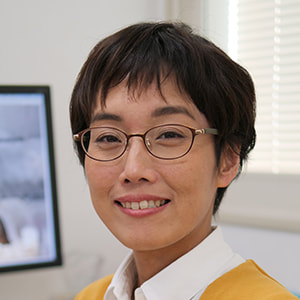Session 4
14 Sep 2021
4:30 - 6:00pm SGT
5:30 - 7:00pm JST
14 Sep 2021
4:30 - 6:00pm SGT
5:30 - 7:00pm JST
Abstract
The naked mole-rat (NMR) is the longest-lived rodent and has remarkable resistance to cancer; their maximum lifespan is over 37 years, and spontaneous carcinogenesis has rarely been observed. Previously, we generated iPS cells from NMRs and showed that NMR-iPS cells exhibit a unique tumor resistance phenotype (Miyawaki et al., Nat. Commun., 2016). Recently, we found that activation of the INK4a/RB pathway, which is crucial for the induction of cellular senescence, leads to cell death in NMR cells via species-specific activation of a metabolic pathway (Kawamura et al., bioRxiv, 2020). This phenomenon may contribute to the inhibition of senescent cell accumulation in NMR individuals. Next, we discovered a possible mechanism that may contribute to the cancer resistance of this species in vivo (Oka, Fujioka, Kawamura et al., in revision). In this webinar, I would like to introduce NMR and talk about the recent progress in our research.
The naked mole-rat (NMR) is the longest-lived rodent and has remarkable resistance to cancer; their maximum lifespan is over 37 years, and spontaneous carcinogenesis has rarely been observed. Previously, we generated iPS cells from NMRs and showed that NMR-iPS cells exhibit a unique tumor resistance phenotype (Miyawaki et al., Nat. Commun., 2016). Recently, we found that activation of the INK4a/RB pathway, which is crucial for the induction of cellular senescence, leads to cell death in NMR cells via species-specific activation of a metabolic pathway (Kawamura et al., bioRxiv, 2020). This phenomenon may contribute to the inhibition of senescent cell accumulation in NMR individuals. Next, we discovered a possible mechanism that may contribute to the cancer resistance of this species in vivo (Oka, Fujioka, Kawamura et al., in revision). In this webinar, I would like to introduce NMR and talk about the recent progress in our research.
Bio
Education
Ph.D. in Medical Science (2010)
Kyoto University, Kyoto, Japan
Advisor: Prof. Shinya Yamanaka
M.Sc. in Bioscience (2006)
Nara Institute of Science and Technology, Nara, Japan
Advisor: Prof. Shinya Yamanaka
B.Sc. in Chemistry (2003)
Nara Women University, Nara, Japan
Advisor: Prof. Kaoru Iwai
Scientific Positions
Associate Professor (2017-present)
Faculty of Life Sciences, Kumamoto University
Associate Professor (2016-2017)
Institute for Genetic Medicine, Hokkaido University
Assistant Professor (tenure track) (2014-2016)
Institute for Genetic Medicine, Hokkaido University
Japan Science and Technology Agency, Sakigake Researcher (2012-2014)
Japan Society for the Promotion of Science, SPD (2011-2012)
Assistant Professor (non-tenured)(2010-2011)
Department of Physiology, Keio University School of Medicine
Advisor: Prof. Hideyuki Okano
Education
Ph.D. in Medical Science (2010)
Kyoto University, Kyoto, Japan
Advisor: Prof. Shinya Yamanaka
M.Sc. in Bioscience (2006)
Nara Institute of Science and Technology, Nara, Japan
Advisor: Prof. Shinya Yamanaka
B.Sc. in Chemistry (2003)
Nara Women University, Nara, Japan
Advisor: Prof. Kaoru Iwai
Scientific Positions
Associate Professor (2017-present)
Faculty of Life Sciences, Kumamoto University
Associate Professor (2016-2017)
Institute for Genetic Medicine, Hokkaido University
Assistant Professor (tenure track) (2014-2016)
Institute for Genetic Medicine, Hokkaido University
Japan Science and Technology Agency, Sakigake Researcher (2012-2014)
Japan Society for the Promotion of Science, SPD (2011-2012)
Assistant Professor (non-tenured)(2010-2011)
Department of Physiology, Keio University School of Medicine
Advisor: Prof. Hideyuki Okano
Abstract
Hutchinson-Gilford Progeria (HGPS) is a segmental, premature ageing syndrome, caused by a mutated, aberrantly processed form of lamin A, called progerin. HGPS patients exhibit signs of premature ageing, including alopecia, skin atrophy, aberrant pigmentation and die in their mid-teens due to cardiovascular complications. Our goal is to elucidate the molecular mechanism(s) that trigger premature ageing in progeria and to understand whether these findings are relevant to normal ageing.
On a cellular level, we demonstrated that progerin-expression causes DNA damage, heterochromatin loss, impaired proliferation and premature senescence, which are prevented by ectopic expression of telomerase, or by modulating the DNA damage response specifically at telomeres. However, the precise mechanism how progerin causes these different disease-associated phenotypes, how they are causally linked, and the relevance of these findings to normal ageing, require further investigation. To address these questions, we generated an inducible expression system to regulate the expression of wild type or mutant lamin A in human skin fibroblasts. This system, in conjunction with single-cell immunofluorescence microscopy, enabled us to delineate the temporal chain of events that occurs upon progerin-expression and ultimately results in premature senescence. Taken together, our results provide evidence for a mechanistic link between the nuclear lamina, chromatin structure and telomeres that is disrupted in progeria. Importantly, these findings may be relevant to normal human ageing as aberrantly processed lamin A, heterochromatin loss and telomeric DNA damage accumulate during chronological ageing.
Hutchinson-Gilford Progeria (HGPS) is a segmental, premature ageing syndrome, caused by a mutated, aberrantly processed form of lamin A, called progerin. HGPS patients exhibit signs of premature ageing, including alopecia, skin atrophy, aberrant pigmentation and die in their mid-teens due to cardiovascular complications. Our goal is to elucidate the molecular mechanism(s) that trigger premature ageing in progeria and to understand whether these findings are relevant to normal ageing.
On a cellular level, we demonstrated that progerin-expression causes DNA damage, heterochromatin loss, impaired proliferation and premature senescence, which are prevented by ectopic expression of telomerase, or by modulating the DNA damage response specifically at telomeres. However, the precise mechanism how progerin causes these different disease-associated phenotypes, how they are causally linked, and the relevance of these findings to normal ageing, require further investigation. To address these questions, we generated an inducible expression system to regulate the expression of wild type or mutant lamin A in human skin fibroblasts. This system, in conjunction with single-cell immunofluorescence microscopy, enabled us to delineate the temporal chain of events that occurs upon progerin-expression and ultimately results in premature senescence. Taken together, our results provide evidence for a mechanistic link between the nuclear lamina, chromatin structure and telomeres that is disrupted in progeria. Importantly, these findings may be relevant to normal human ageing as aberrantly processed lamin A, heterochromatin loss and telomeric DNA damage accumulate during chronological ageing.
Bio
After completing his undergraduate degree in Bern, Switzerland, Oliver Dreesen worked at the University of California, San Diego, the Pasteur Institute in Paris, and Lonza AG in Switzerland. He received his Ph.D. from the Rockefeller University in New York City, where he studied the structure and function of telomeres and telomerase in the protozoan parasite Trypanosoma brucei. In 2009, he joined the Institute of Medical Biology in Singapore to study telomeres during cellular reprogramming and in human genetic diseases. Dreesen was promoted to Project Leader in 2013, and to Principal Investigator and Head of the Laboratory for Cell Ageing in 2016. His laboratory at the Skin Research Institute of Singapore (SRIS) investigates how perturbations at the nuclear lamina affect cell physiology and result in premature cellular senescence, human ageing and disease. He served as President of the Skin Research Society Singapore from 2019-2021.
After completing his undergraduate degree in Bern, Switzerland, Oliver Dreesen worked at the University of California, San Diego, the Pasteur Institute in Paris, and Lonza AG in Switzerland. He received his Ph.D. from the Rockefeller University in New York City, where he studied the structure and function of telomeres and telomerase in the protozoan parasite Trypanosoma brucei. In 2009, he joined the Institute of Medical Biology in Singapore to study telomeres during cellular reprogramming and in human genetic diseases. Dreesen was promoted to Project Leader in 2013, and to Principal Investigator and Head of the Laboratory for Cell Ageing in 2016. His laboratory at the Skin Research Institute of Singapore (SRIS) investigates how perturbations at the nuclear lamina affect cell physiology and result in premature cellular senescence, human ageing and disease. He served as President of the Skin Research Society Singapore from 2019-2021.
Chairs
Aiko SADA, Kumamoto University, Japan
Kim ROBINSON, SRIS, Singapore
Aiko SADA, Kumamoto University, Japan
Kim ROBINSON, SRIS, Singapore


